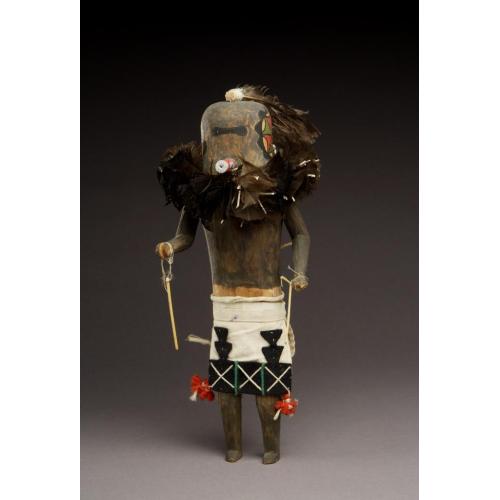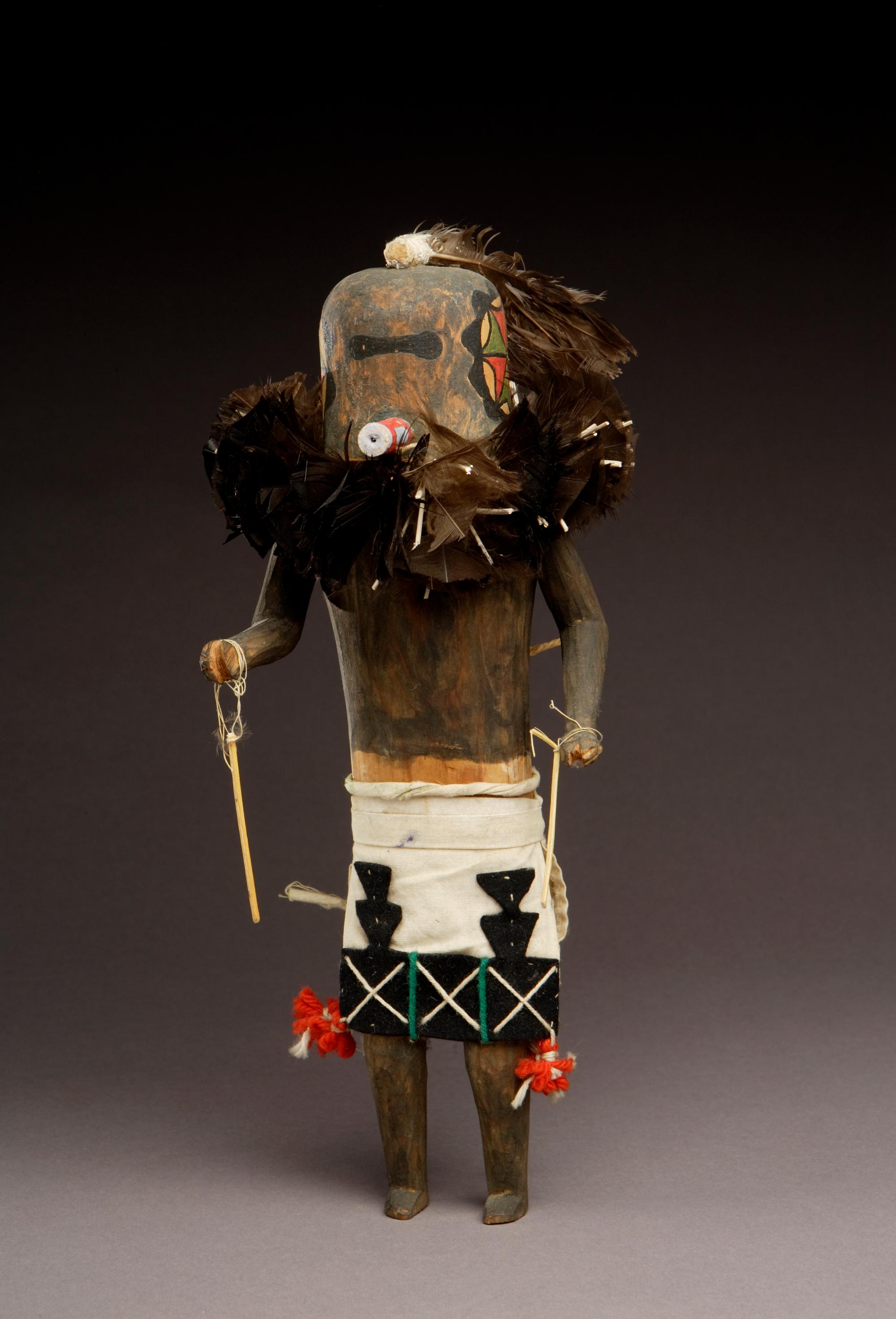
Photograph by Addison Doty. Copyright 2009 School for Advanced Research.
Salimobia Łuptsinna kokko we'ha | Blue Salimobia kokko figure
Date: before 1929
Artist or Maker: Unknown
Dimensions:
Overall: 31.1 cm (12 1/4 in.)
Medium: wood | paints | feathers | cotton | felt, synthetic | yucca
Credit Line: Gift of Mary V. Conkey, 1929.
Place Made:
Zuni Pueblo, McKinley County, New Mexico, Southwest, United States, North America
Object Number: IAF.C94
Not on view
Tribal Collection Review RemarksJim Enote and Octavius Seowtewa during collection review visit April 6 and 7, 2009 (Events Record “Collection Review: Zuni Tribe, Review 1”): This kokko is the blue version of the Salimobia. It is related to SAR.1984-22-3 (yellow version) and IAF.C323 (multi-colored version). All versions of the Salimobia are disciplinarians and keep order during ceremonies.
The variously colored Salimobia represent all the directional colors: yellow represents north, blue is west, red is south, and white is east. Black represents below or bottom, while above or top is represented by multi colors. These colors also represent the six kivas at Zuni.
ADDITIONAL INFORMATION: Jim Enote and Octavius Seowtewa during collection review visit April 10 and 11, 2014 (Events Record “Collection Review: Zuni Tribe, Review 13”): This kokko figure is carved from wood, probably pine. The head, torso, arms, and legs are painted a dark color that looks like a dark bluish gray now, but it is meant to be blue; the paint may have changed color over time. The head has a flower shape painted on either side, in red, green, black, and white. The eyes are represented by a wide black line that is rounded at either end. The mouth beak is a tube shape that is painted red and light blue. The paints on the figure are likely commercial poster paints. There are five feathers on top of the head that are tied to a small stick with white cotton string that is painted with white gypsum paint. The feathers are blackbird tail feathers.
The figure wears a ruff made of turkey feathers. There is also a plant fiber string (possibly hemp) tied around the neck and visible in the back is meant for hanging the figure on a wall.
The arms are articulated at the shoulders and attached to the body with a nail through each shoulder. A piece of yucca dangles from each wrist from a piece of white thread. There is a tiny piece of feather fluff tied to the top of the yucca hanging from the right wrist. Real dancers hold yucca strips in their hands, so it’s possible these were originally tied so that the pieces of yucca were in the figure’s hands.
The figure wears a white muslin breechcloth with black felt sewn to it with white thread. White and green yarn are sewn over the felt, representing embroidery. There are Red and white yarn tassels at the corners of the breechcloth. A white strip of cloth tied over top of the kilt would be blue on a real dancer. Another strip of white muslin, this one twisted, is wrapped around the figure’s waist, just above the kilt. It would have also been intended for hanging the figure on a wall (like the plant fiber string, which may have been a later addition).
There are several pieces missing from the kokko’s outfit as compared to what the dancer would wear. It should have a short turquoise necklace worn in front, a bow guard on its left wrist, a deer scapula in its left hand, and a bandolier strap with a pouch.
In Collection(s)
The Indian Arts Research Center, in collaboration with Native American community scholars, strives to present accurate collections records. Records may be updated as new information becomes available and is reviewed with the Native American community having cultural affinity to particular items. Please write to iarc@sarsf.org if you have questions or concerns related to the documentation.
